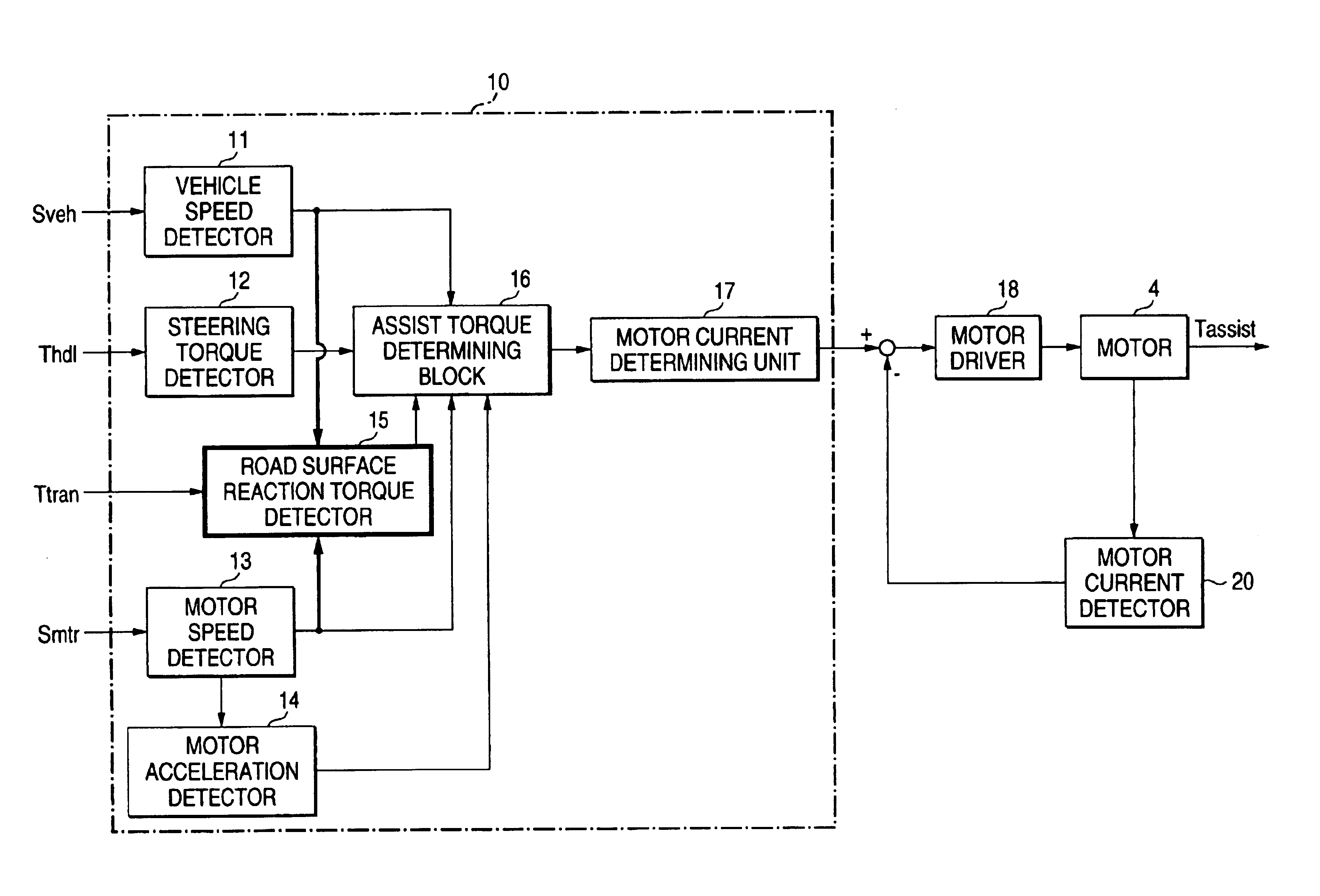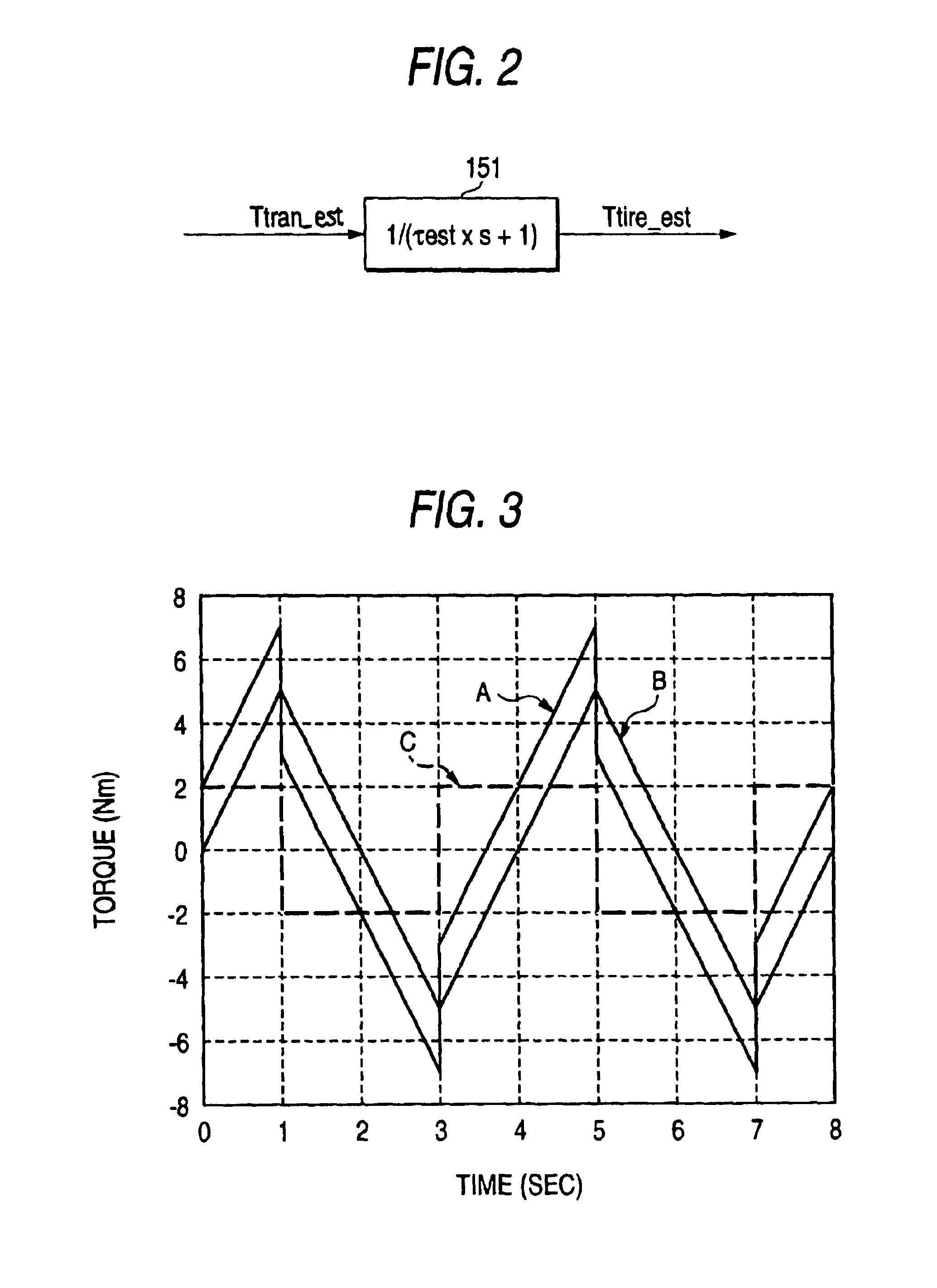Electric power steering control apparatus
- Summary
- Abstract
- Description
- Claims
- Application Information
AI Technical Summary
Benefits of technology
Problems solved by technology
Method used
Image
Examples
embodiment 1
FIG. 1 is a schematic diagram showing an electric power steering control apparatus according to a first embodiment of the present invention.
In FIG. 1, reference numeral 1 denotes a steering wheel of an automobile that is manipulated by a driver. The steering wheel 1 is coupled to a steering shaft 1A. Reference numeral 2 denotes tires that are attached to both ends of an axle 2A of the automobile. The steering shaft 1A is coupled to the axle 2A so as to steer it. Reference numeral 3 denotes a torque sensor that is provided in a steering torque transmission mechanism from the steering wheel 1 to the tires 2, for example, attached to the steering shaft 1A. The torque sensor 3 detects a steering torque that is generated by a steering manipulation of the driver. Reference numeral 4 denotes an EPS (electric power steering) motor that is provided in the steering torque transmission mechanism from the steering wheel 1 to the tires 2, for example, attached to the steering shaft 1A so as to a...
embodiment 2
FIG. 9 is a block diagram showing the configuration of an electric power steering control apparatus according to a second embodiment of the invention. A block 10A enclosed by dot-dashed lines in FIG. 9 is a block for calculating a target value of the drive current Imtr of the motor 4. In the second embodiment, a road surface reaction torque detector 15A is used instead of the road surface reaction torque detector 15 shown in FIGS. 4 and 5. FIG. 10 is a block diagram showing the configuration of the road surface reaction torque detector 15A of the electric power steering control apparatus according to the second embodiment of the invention. A block enclosed by dot-dashed lines corresponds to the road surface reaction torque detector 15A.
In FIG. 9, whereas the road surface reaction torque detector 15A is used, the sections 11-20 are the same as in FIG. 4. As shown in FIG. 10, the road surface reaction torque detector 15A has blocks 21A, 22, 23 and 24. The blocks 22-24 are same as in F...
embodiment 3
FIG. 12 is a characteristic diagram showing a relationship between the road surface reaction torque and the steering angle in an electric power steering control apparatus according to a third embodiment of the invention. In FIG. 12, the vertical axis represents the torque (N·m) and the horizontal axis represents the time (s). Characteristic E is road surface reaction torque Talign (divided by 50), characteristic F is a steering angle θhdl, and characteristic G is the steering shaft speed. The steering shaft speed is proportional to the motor rotation speed.
FIG. 13 is a block diagram showing the configuration of a road surface reaction torque detector 15B of the electric power steering control apparatus according to the third embodiment of the invention. A block enclosed by dot-dashed lines corresponds to the road surface reaction torque detector 15B.
In FIG. 13, the blocks 21A, 22, 23 and 24 are the same as shown in FIG. 10. Reference characters J and K denote operators. The operator...
PUM
 Login to View More
Login to View More Abstract
Description
Claims
Application Information
 Login to View More
Login to View More - R&D
- Intellectual Property
- Life Sciences
- Materials
- Tech Scout
- Unparalleled Data Quality
- Higher Quality Content
- 60% Fewer Hallucinations
Browse by: Latest US Patents, China's latest patents, Technical Efficacy Thesaurus, Application Domain, Technology Topic, Popular Technical Reports.
© 2025 PatSnap. All rights reserved.Legal|Privacy policy|Modern Slavery Act Transparency Statement|Sitemap|About US| Contact US: help@patsnap.com



